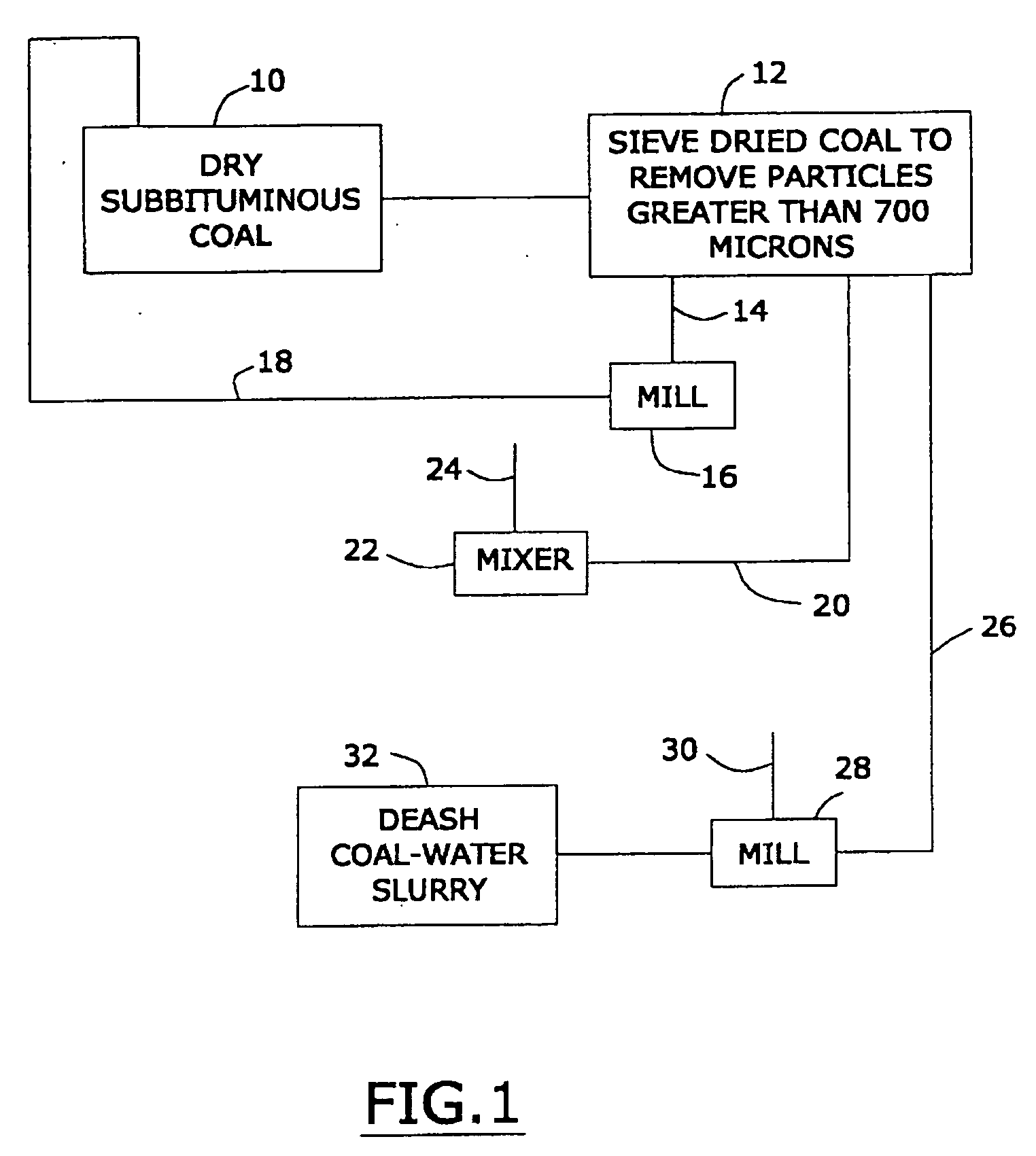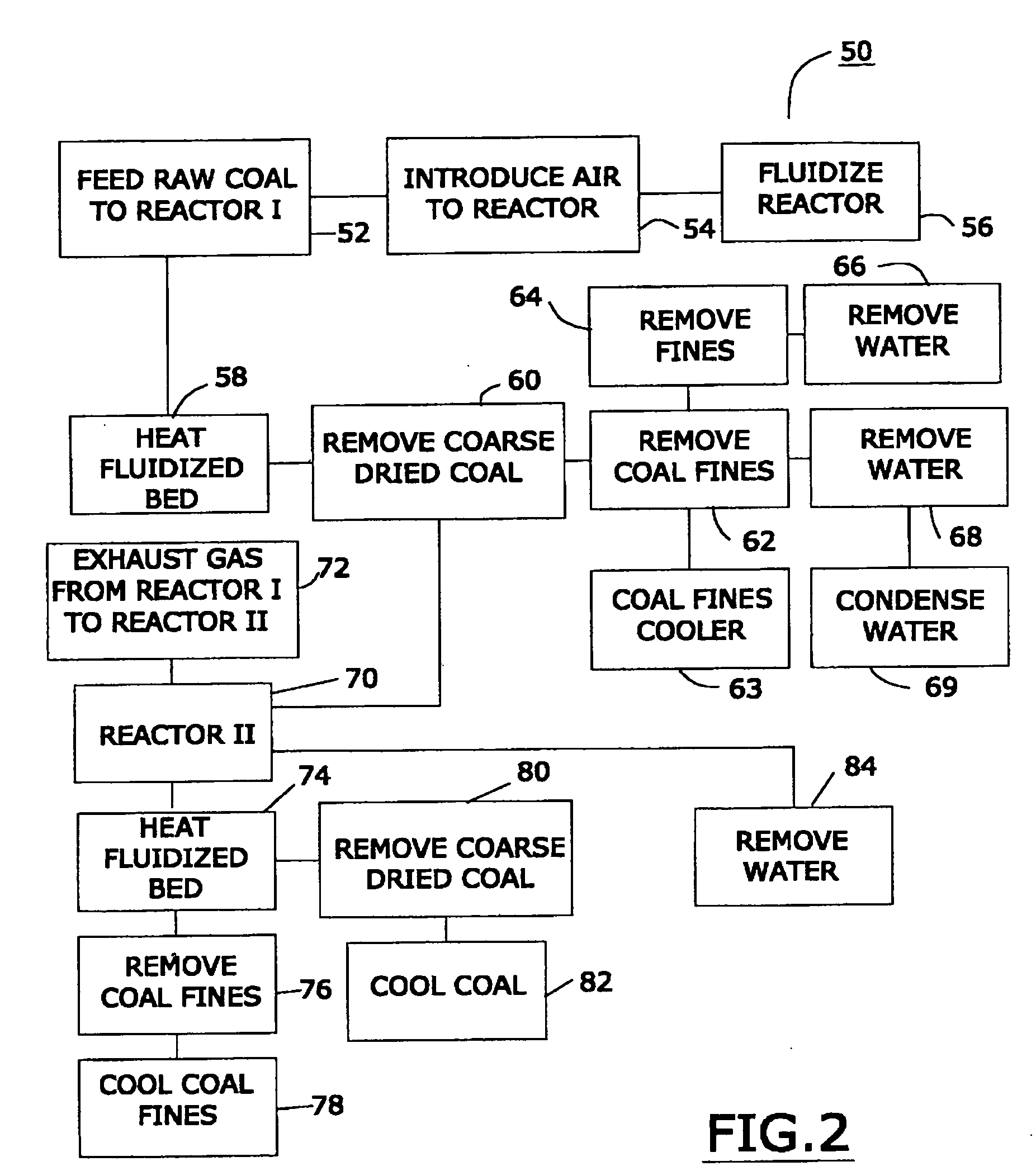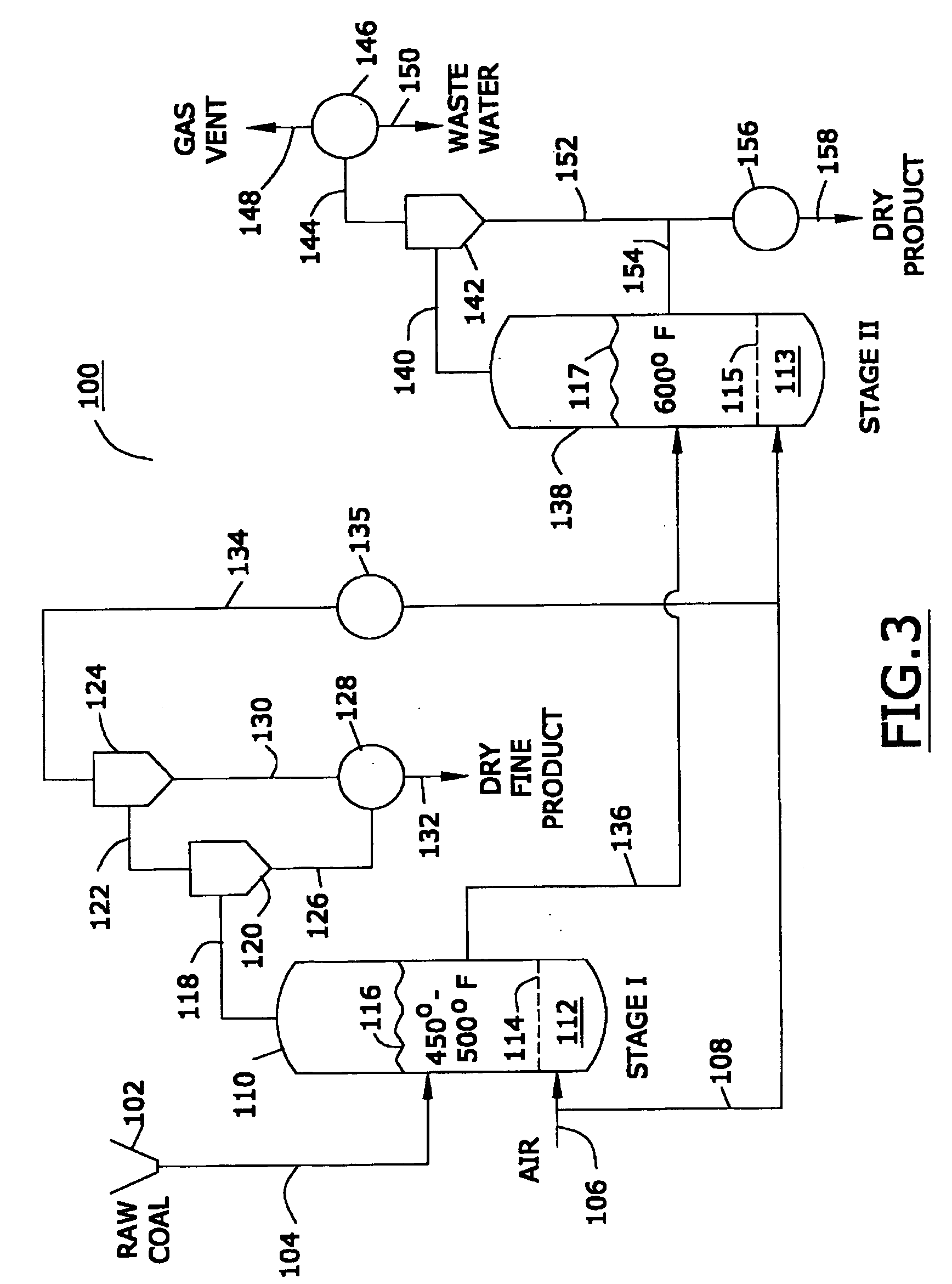Process for in-situ passivation of partially-dried coal
a technology of in-situ passivation and partially dried coal, which is applied in the direction of instruments, electrophonic musical instruments, fuels, etc., can solve the problems of excessive transportation costs of these moisture-laden low-rank coal products, exposing workers and emergency responders to dangerous conditions, and the effect of reducing the ability of coal to be passedivated
- Summary
- Abstract
- Description
- Claims
- Application Information
AI Technical Summary
Benefits of technology
Problems solved by technology
Method used
Image
Examples
example 1
[0131] Wyodak coal from the Powder River Basin was mined. The raw particle size ranged from ¼ inch to ⅜ inch. This coal was dried for 4 minutes in a fluidized bed reactor at a temperature of 600 degrees Fahrenheit in the presence of air and recycled gas such that the combined gas had an oxygen content of about seven percent. The dried coal product had a moisture content of about ½ percent.
[0132] The passivated coal was allowed to sit for 30 days in an exposed outdoor storage structure (with a top) with relative humidity ranging from 37 to 78 per cent. The passivated coal absorbed water until the water content reached 2.5%, its water content equilibrium. The coal was subjected to temperatures ranging between 50 and 90 degrees Fahrenheit. No spontaneous combustion was observed.
[0133] Water was added to a portion of the passivated coal. The passivated coal absorbed water until the water content reached 2.5%, its water content equilibrium. The coal was subjected to temperatures rangin...
PUM
 Login to View More
Login to View More Abstract
Description
Claims
Application Information
 Login to View More
Login to View More - R&D
- Intellectual Property
- Life Sciences
- Materials
- Tech Scout
- Unparalleled Data Quality
- Higher Quality Content
- 60% Fewer Hallucinations
Browse by: Latest US Patents, China's latest patents, Technical Efficacy Thesaurus, Application Domain, Technology Topic, Popular Technical Reports.
© 2025 PatSnap. All rights reserved.Legal|Privacy policy|Modern Slavery Act Transparency Statement|Sitemap|About US| Contact US: help@patsnap.com



